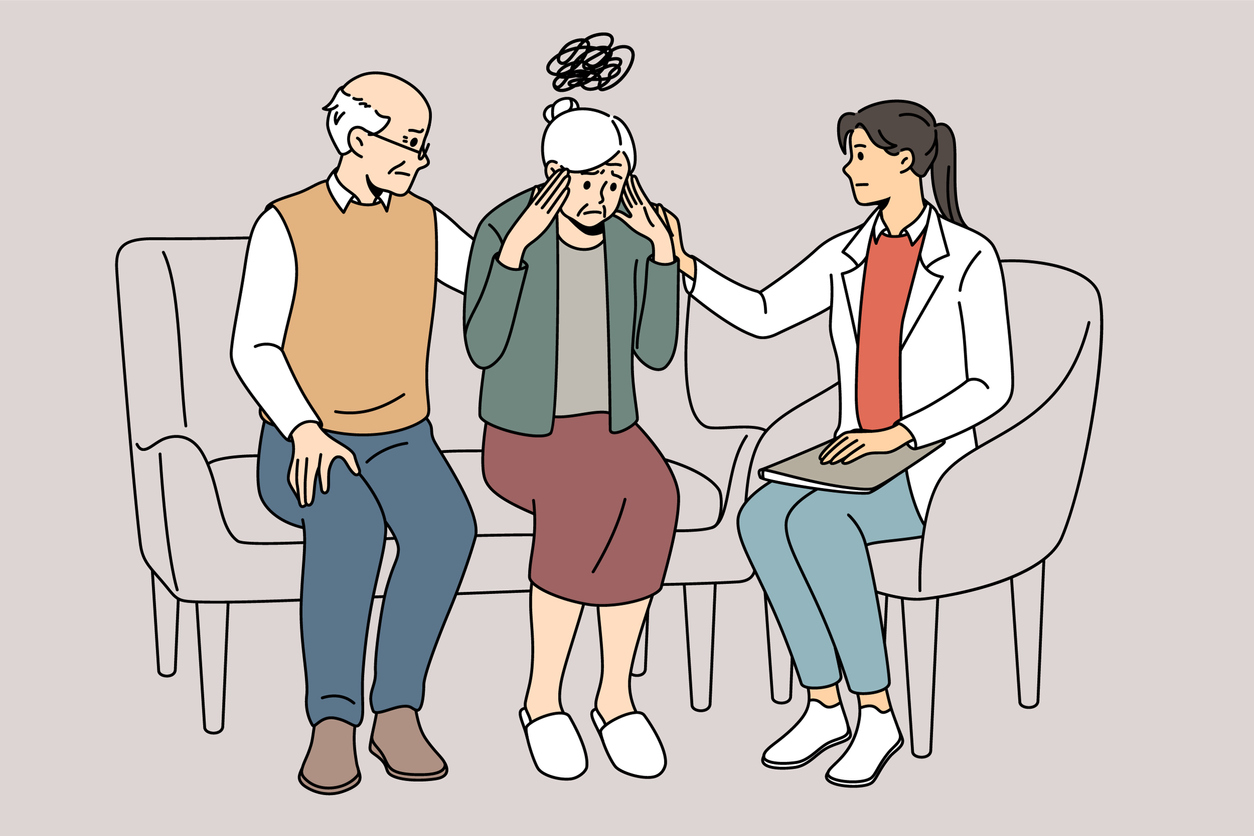For a few moments last month, Anne Brassard felt what it’s like to have dementia. She had trouble seeing. She could barely hear over the buzzing in her ears. Her fingers wouldn’t cooperate. She struggled, and failed, to follow simple directions.
“I felt frustrated, and helpless. Really helpless,” Anne says.
She’d signed up for the experience. As a HopeHealth volunteer, Anne often visits patients with memory conditions. She’d already received in-depth education as part of her HopeHealth orientation. But when she heard about an additional training, known as the Virtual Dementia Tour, she immediately raised her hand. She knew it could only enhance her understanding, and empathy, for patients living with dementia.
She’d never expected it would feel this real, though.
At the start of the training, clinical educator Lisa Wasson, RN, CHPN, CMDCP, told participants: “If it ever gets to be too much, just say ‘Stop.’”
“I think that’s what stayed with me most,” says Anne. “Because somebody with dementia can’t say, “Stop, I want to get out of here.”
> Learn more about our Circle of Love Dementia Care Program
Experiencing the physical and sensory changes of dementia
Using simple tools and research-backed principles, the Virtual Dementia Tour simulates the experience of living with dementia. Back in 2019, HopeHealth began offering the training to local care facilities as one of its community education programs. After pausing for the pandemic, it’s now resuming, beginning with HopeHealth volunteers.
First, Anne and her fellow participants geared up. They put on padded headphones, which piped in a disorienting hum of static and sirens. They donned eyeglasses that dimmed their peripheral vision, making it hard to get their bearings. They pulled on thick gloves, dulling their sense of touch and making their fingers clumsy. Finally, they slipped on shoes that mimicked the pangs of neuropathy. Just walking down the hall was an ordeal.
Next, each participant was guided into the simulation room and instructed to complete five simple tasks.
Normally, this would be an easy assignment. Instead, it was baffling.
“I get all these instructions, boom boom boom, but I’m not able to really focus on what Lisa’s saying, and I’m not allowed to ask her to repeat anything,” says Anne. “I had all this noise in my head, so I could barely hear her. She held a clipboard in front of her face, so I couldn’t see her mouth.”
“It was so overwhelming,” she adds.
Understanding the sudden strain of everyday tasks
As she strained to hear Lisa’s instructions, Anne caught something about a jacket, 17 cents, and a flashlight. Then she entered the simulation room, and only felt more lost. She eventually fumbled her way to some items that seemed to fit the brief, like a clothes rack, a flashlight, and a change purse. But she also discovered a table with dinnerware piled on it, and a drawing of a clock.
“I’m thinking, ‘What am I supposed to do?’” says Anne.
She muttered to herself as she picked her way through the room, guessing what to do next. With the constant noise in her ears, she didn’t realize she was talking out loud. Even knowing it was just a drill, she felt her desperation growing. It was a painful glimpse of another aspect of dementia.
“People living with dementia haven’t lost that sense of, ‘I want to be useful. I want to do things right. I want people to be pleased with me,” she says.
She was aware of something else, too.
“I had to keep saying, ‘This isn’t my reality,’” she says. “If I didn’t, I could’ve moved from frustration to anger very quickly.”
She thought about Johnny, a patient she’d cared for in her early days as a caregiver. When he acted out, his family’s first reaction was often irritation.
“This training would have been incredibly helpful, just to help understand his world,” Anne says.
> Related: Caring for someone with dementia? In Massachusetts, a free program is here to help
Walking in the shoes of someone with dementia
From the moment Anne entered the simulation room to the moment she exited, about six minutes passed.
“It felt like forever,” she says. “The whole time, I was thinking, ‘Get me out of here.’” Later that day, back in her own home, the feeling lingered. “It took me hours before I shook that sense of how helpless I felt,” she says.
On one hand, the training reinforced the same tips she’d learned in HopeHealth’s standard orientation. Speak slowly and simply. Position yourself directly in the person’s field of vision. Be patient. Be patient. Be patient.
But for the first time, she had a deeply personal sense of why all these tips mattered — and how much comfort they can bring to a person with dementia.
“It was incredibly enlightening. I think of all the patients who I’ve worked with who have dementia. To actually experience it put a whole different light on it,” she says.
HopeHealth plans to bring the training to more volunteers soon, and eventually, to the staff at care facilities in the community. It’s another aspect of the organization’s leadership in caring for serious illness.
It’s also an extension of HopeHealth’s mission to offer compassion — and hope — when patients and families need it most.
“I think this training is a gift to any caregiver,” says Anne. “Like they say, you never know until you’ve walked in someone else’s shoes. This was like walking in the shoes of someone with dementia.”

